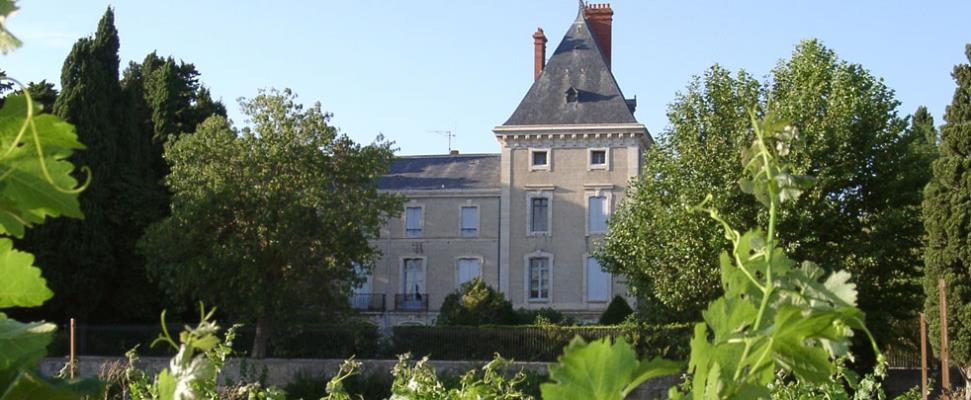
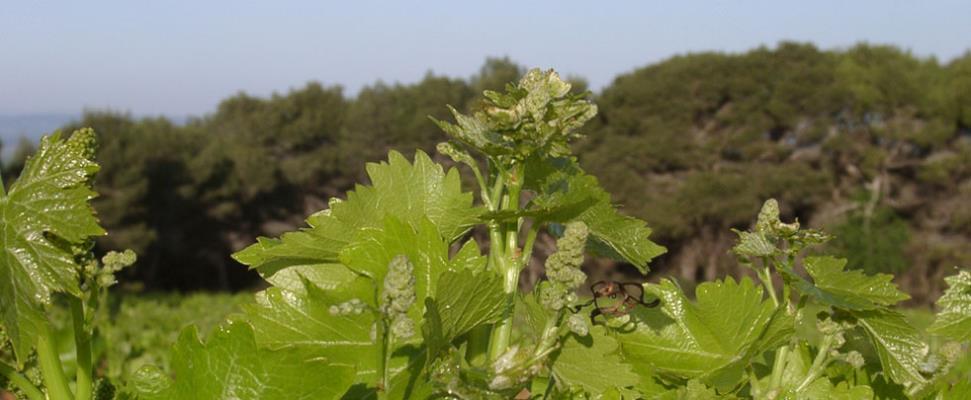
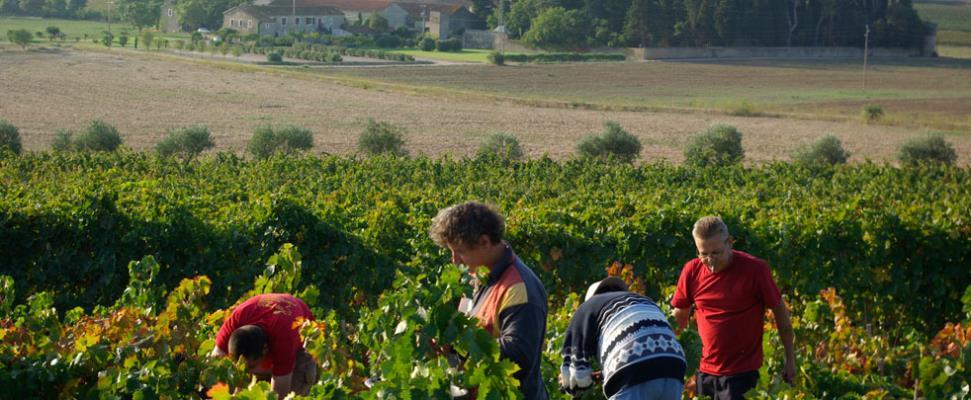
![]()
The close proximity of the protohistoric site of Ensérune was a determining factor for the creation of the first settlement here, on the site of the present-day Château. In spite of the Romanisation that took place from the 1st Century BC onwards, Ibero-Languedocian culture survived, as did the Iberian language, which continued to be spoken practically throughout the area. Numerous traces of this influence can still be found today in the names of parcels of land on the Estate: Cantogragnotos, Cantoperdrix, Fumeras, etc. During the 1st Century AD the inhabitants of Ensérune opted to organise their surroundings in a new way in the form of plain villas, which afforded more comfortable living and farming conditions. This seems to be the point at which the history of Château La Vernède really began. Remains of this era have been found a few metres away from the Château: two rooms from the villa have been restored, in one of which the part of the original mosaic floor had survived. A wall 30 metres in length erected to protect against flooding from the River Aude, three presses, a cistern, a bridge and several walls and basements are the main evidence that the site was occupied as early as the 1st Century; a few pieces of painted wall plaster and fragments of pottery complete the inventory. The residence's Roman owner was named Caissus.
 On a parcel of land long known as 'Treasure Vine', a much larger villa has been restored. Stretching over a total area of 3,500 m², it dominates the plain of Narbonne. Major discoveries have been made here: Graufesenque pottery, pots, vases, jars, oil lamps, amphorae, dolias, mosaic tiles, glass, coins, painted wall plaster (8 different colours have been found so far), over a dozen marbles of diverse origin (Carrare, St. Béat, Syria, Egypt, Northern Africa, etc.). We know that this villa was heated and that it had thermal baths, a swimming pool and several individual buildings..
On a parcel of land long known as 'Treasure Vine', a much larger villa has been restored. Stretching over a total area of 3,500 m², it dominates the plain of Narbonne. Major discoveries have been made here: Graufesenque pottery, pots, vases, jars, oil lamps, amphorae, dolias, mosaic tiles, glass, coins, painted wall plaster (8 different colours have been found so far), over a dozen marbles of diverse origin (Carrare, St. Béat, Syria, Egypt, Northern Africa, etc.). We know that this villa was heated and that it had thermal baths, a swimming pool and several individual buildings..
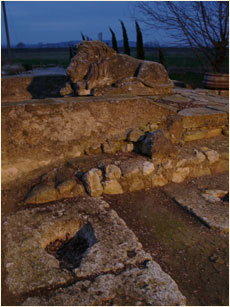 The region was subsequently occupied by the Visigoths. Archaeological digs organised in 1991 by Abbé Joseph Giry, the village priest and head conservationist at Ensérune Museum, enabled around ten wedge tombs at the outskirts of the Estate dating from the 5th to the 8th Century to be restored. The Gothic chapel had been erected on the foundations of the Roman villa.
The region was subsequently occupied by the Visigoths. Archaeological digs organised in 1991 by Abbé Joseph Giry, the village priest and head conservationist at Ensérune Museum, enabled around ten wedge tombs at the outskirts of the Estate dating from the 5th to the 8th Century to be restored. The Gothic chapel had been erected on the foundations of the Roman villa.
Little is known of the history of the estate between the 7th and the 16th Century. It may even have been abandoned. A manuscript map by Fabre dating from 1595 places a construction on the site of the modern-day Château; at that time the village of Nissan lez Ensérune was known as Niße. Another map, again on manuscript but this time by Sercamanem in 1625 and entitled 'Hydrographic description of Upper and Lower Languedoc', was the first to mention the name of 'La Bernette'. The River Aude, which at that time had not been diverted, flowed in front of the Château.
On 23 March 1661, Jacques Vernette, Esquire and citizen of the town of Béziers, was granted permission by Monsignor François Fouquet, archbishop and primate of Narbonne and advisor to the King (…) to "have the countrie chapel of St. Jean de Cayssan (from the name of Caissus) on the land of Niße rebuilt in the strait of the Vernette kitchens at the same site whereon it was afore".
On 23 June 1662 Jacques Vernette applied for the new chapel to be consecrated. The chapel was in service until the French Revolution, when it was confiscated as forming part of the property of the clergy; under the Concordat, rather than being used for worship, it remained in private hands and was used for farming purposes before being demolished in the 19th Century. A notarial deed of 6 May 1691 states that La Vernette was transferred by Sir Jean (…), Baron de Saint Valière to Sir Jean Pourret de Poussol.
A few years before 1811, the farm at La Vernette was run by the brothers Messrs. Maury. On 22 September 1811, Joseph-François Fournas de Labrosse, Knight of the Royal Military Order of St. Louis, landowner, leased out La Vernette as a farm for a fixed sum in rent to Sir Joseph Delon and Sir Jean-Louis Camman, tillers. The rent was set at 5,200 francs. .
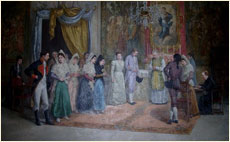 In 1833, Marie Jean Hyacinthe Le Sage d’Hauteroche, Count of Hulst, acquired the Estate.
In 1833, Marie Jean Hyacinthe Le Sage d’Hauteroche, Count of Hulst, acquired the Estate.
On 17 May 1833, he purchased the Bosc de Caîssan, which today forms the park of the Château.
On 22 October 1872, the heirs of Hyacinthe d’Hauteroche, Raoul, Count of Hulst, Marie-Nathalie, in holy orders, Maurice, priest, and Marie-Amélie Lambert de Cambray, wife of Vicomte de Brossin de Méré, transferred their property to Henri Calvet, descendant of Pierre Mignard, First Painter to King Louis XIV, Chancellor of the Academy of Painting and Sculpture. At this time the Estate covered 195 hectares.
Today, the Château of La Vernède belongs to the Ribet family, and Jean-Marc, who is responsible for its upkeep, is the great-grandson of Henri Calvet.
Coming from Montpellier:
From the motorway, take Exit 36 Béziers Ouest, then take the N 113 towards Nissan lez Ensérune and the settlement of Ensérune.
Coming from Toulouse:
From the motorway, take Exit 37 Narbonne Est towards Coursan, then Salles d'Aude. GPS coordinates: 03° 06' 26'' East, 43° 15' 31'' N
Mr Jean-Marc Ribet - Propriétaire, Co-gérant Mr Jean-Luc Maurer - Co-gérant Mme Catherine Maurer - Assistante Administrative & Commerciale |
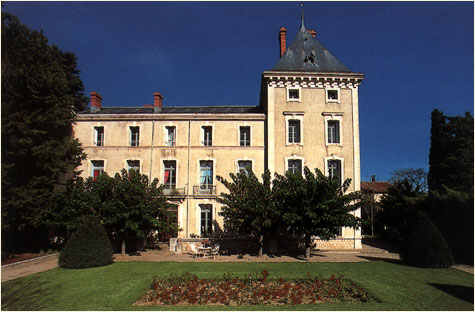 |
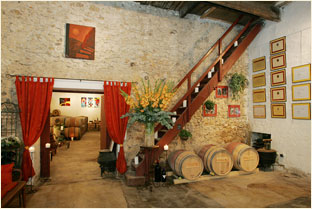
Si le Château ne se visite pas, il est possible en revanche de voir les vestiges romains, le parc assez unique de par la variété et l’âge de certains arbres qui y
sont présents, ainsi que le potager où une très belle serre y fût bâtie en 1901. Parmi les deux hectares et demi de bâtiments vous pourrez entre autres visiter
les écuries des mules, les écuries des chevaux de selle, la sellerie et la forge. Mais le Château La Vernède est avant tout un domaine viticole.
Nous nous ferons donc un plaisir de vous faire découvrir la cave de vinification (une des caves particulières les plus importantes de la région avec une capacité de
30 000 hectolitres sur 1 800 m²), les chais de vieillissement et le caveau de dégustation dans lequel sont exposées quelques trouvailles archéologiques ainsi
qu' un pressoir du début du XVème siècle.
Visites et dégustations sont gratuites. Rendez nous visite et choisissez parmi notre gamme complète de vin celui
qui correspond à votre humeur, ou mieux, laissez vous tenter par un assortiment.